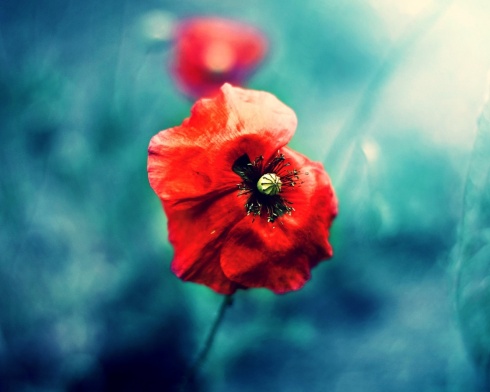🔮🔮🔮🔮🔮/5!
 Harold Roth is a leading authority on plant/herbal magic. His new book, The Witching Herbs, is an in-depth exploration of 13 essential plants and herbs most closely associated with witchcraft—13 because it’s the witching number and reflects the 13 months of the lunar calendar. The plants are poppy, clary sage, yarrow, rue, hyssop, vervain, mugwort, wormwood, datura, wild tobacco, henbane, belladonna, and mandrake.
Harold Roth is a leading authority on plant/herbal magic. His new book, The Witching Herbs, is an in-depth exploration of 13 essential plants and herbs most closely associated with witchcraft—13 because it’s the witching number and reflects the 13 months of the lunar calendar. The plants are poppy, clary sage, yarrow, rue, hyssop, vervain, mugwort, wormwood, datura, wild tobacco, henbane, belladonna, and mandrake.
Roth writes, “This book is a great choice for intermediate-to-advanced witches who would like to work more closely with the traditional witching herbs, especially the baneful plants with their rather difficult spirits. Working directly with spirits is one of the fundamentals of the Craft.”
The Witching Herbs is the essential plant-worker’s guide. Roth is not only a successful gardener, but also a magician and scholar of the occult. No other book blends clear, practical gardening techniques with equally lucid and sophisticated plant magic so successfully. – Weiser Books
This has got to be one of the best new books about herbal witchcraft I’ve read in years. Though it only covers 13 herbs, the herbs chosen are ones that you can rarely find any good PRACTICAL information about. The herbs included are poppy, clary sage, yarrow, rue, hyssop, vervain, mugwort, wormwood, thornapple, wild tobacco, henbane, belladonna, and mandrake. Herbs that modern witches and wiccans have been using in screen names (opium_eyes) and as their etsy ID (Mandragora, here), but rarely in their actual magick. Most of the info you find about things like Belladonna or Henbane are bizarre curses with no real practical application or just a big old NO. This book is different.
My favourite feature of the book is that the author, Harold Roth, makes it clear right away that what you find in his book may be extremely different from other common sources. He’s found that what you read in books isn’t always accurate, or accurate for every witch, and instead combines lore and history with his own magical expriences. Not only does this make the book brand new and exciting for someone who’s read a lot of herb magick books, but the lesson that magick is more about what you experience and less about what you read is an important one.
Before he even starts in on the herbs, he talks about growing and cultivating your own herbs – building a magickal garden inside or outside, in pots or in the earth. He’s a real gardener so much of the book is dedcated to teaching you to grow your own magickal herbs, even if you have a less than green thumb. He explains different kinds of fertilizers, which herbs can affect other plants growing around them, and difference between similar herbs with American and European Mandrake as a great example.

The book won me over quickly when the first herb covered is poppies – my favourite flower! Each chapter covers a different plant and talks about how it grows, history and lore associated with it, different magickal and culinary recipes, using it in your magick, and finally growing it in your garden. The crafts and recipes in the book are listed alongside the history or lore that inspired them, and I couldn’t get enough. I was so inspired with the Rue chapter and it’s information about the Cimaruta charms from italian witchcraft that I chose rue as the featured herb in my Witch n’ Bitch group this month!
The book claims to be “a great choice for intermediate to advanced witches who would like to work more closely with the traditional witching herbs, especially the baneful plants with their rather difficult spirits.” and I firmly agree. I don’t consider myself an expert by any means, but my process for starting to work with magickal herbs is similar to Mr. Roth’s in that I take time and try and get to know the herbs in their living and dead states and try everything I can with them before really deciding what I think. I’ve been a witch for more than 20 years and even I didn’t use any of these herbs in the book until the last 5 years or so, and even then not all of them. I don’t recommend any new witches try and work with “baneful” or poisonous herbs for magick without lots of research, and Mr. Roth makes that warning very clear.
That being said, if you’re serious about learning to grow and work with magickal herbs, this is an amazing resource that is super easy to read and will give you some of the best herbal info you’ll find in any book. Follow the advice in the book and take your time interacting with and learning about the spirit within each of these magickal plants and you’ll be whipping up incredible herbal spells before you can say “deadly nightshade”.
A lot of the info I shared in my Seeker’s Corner episode about Mugwort came from The Witching Herbs! Check out the replay on Facebook.




2 thoughts on “Book Review of Shadows: The Witching Herbs by Harold Roth”